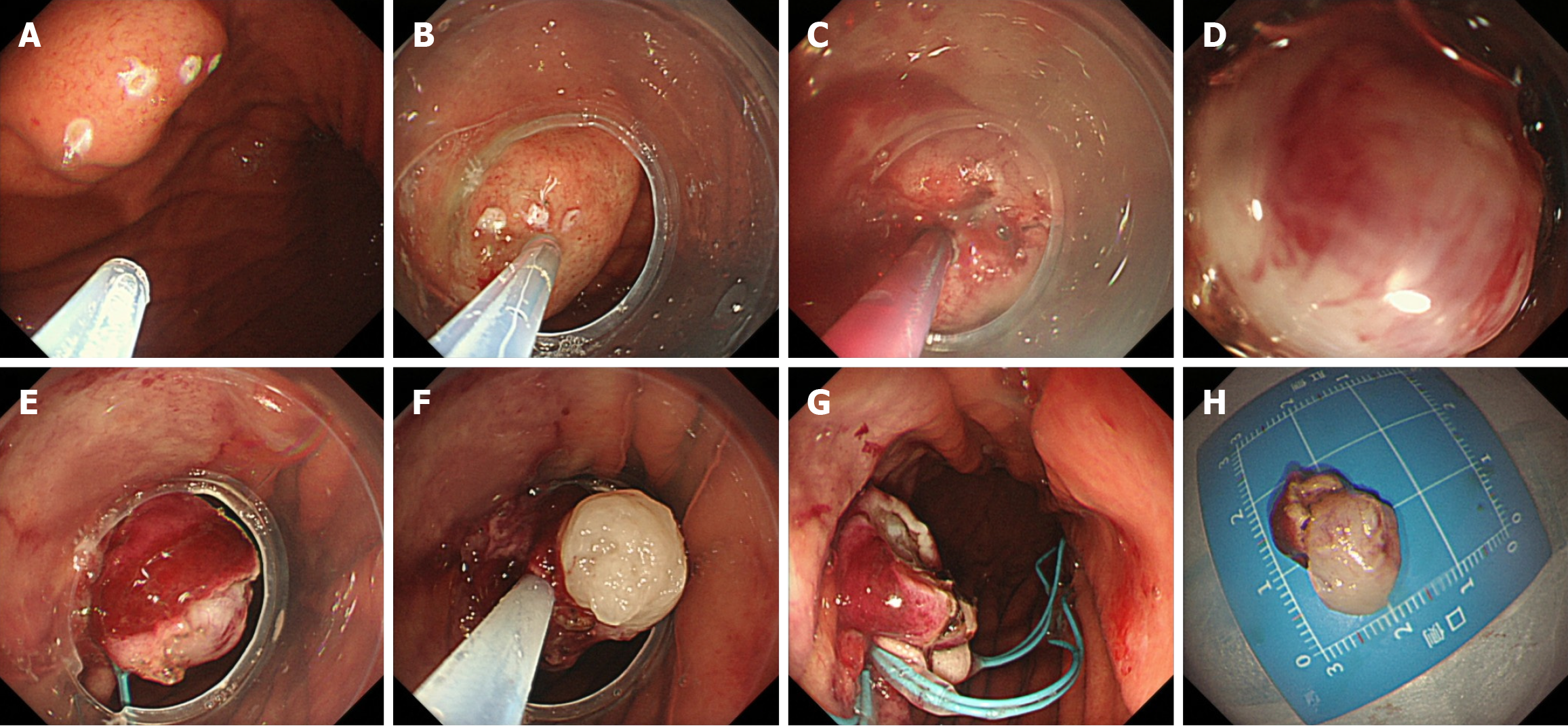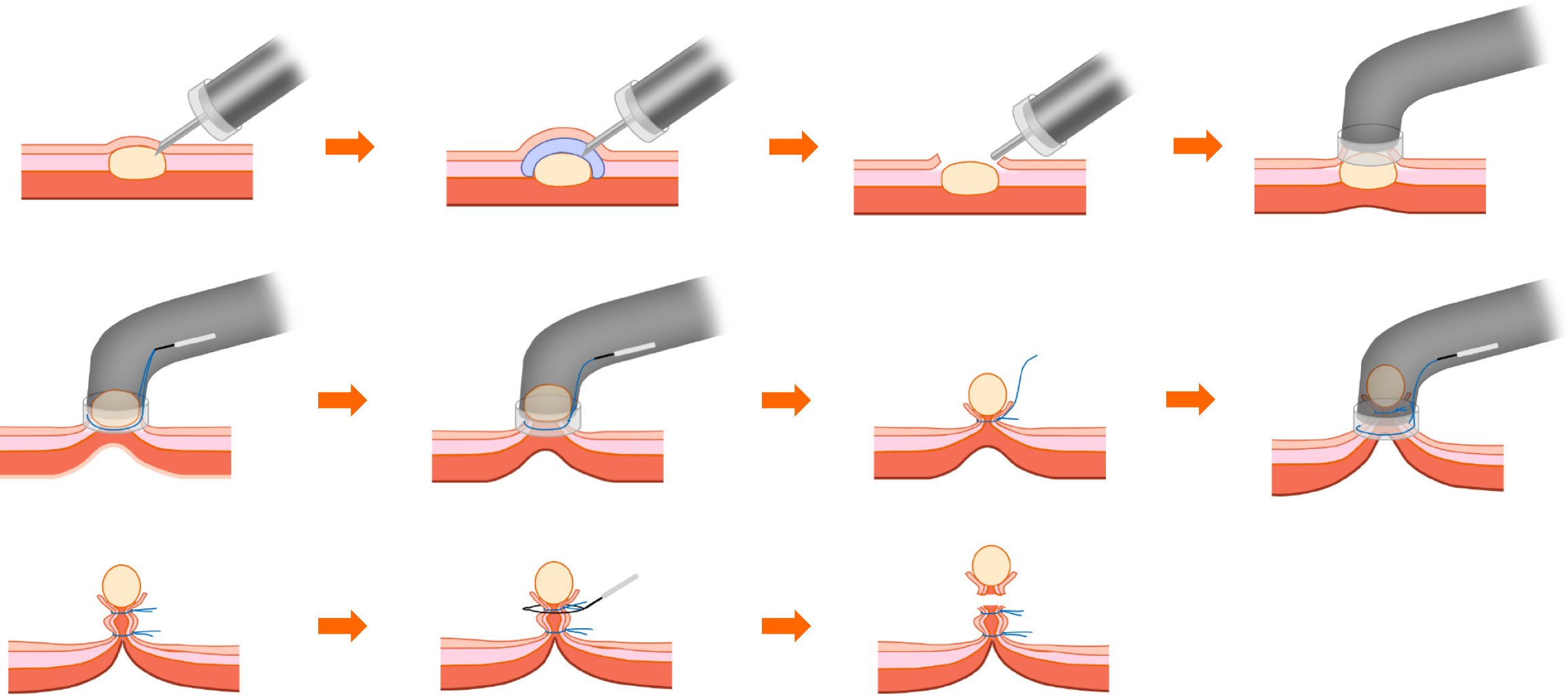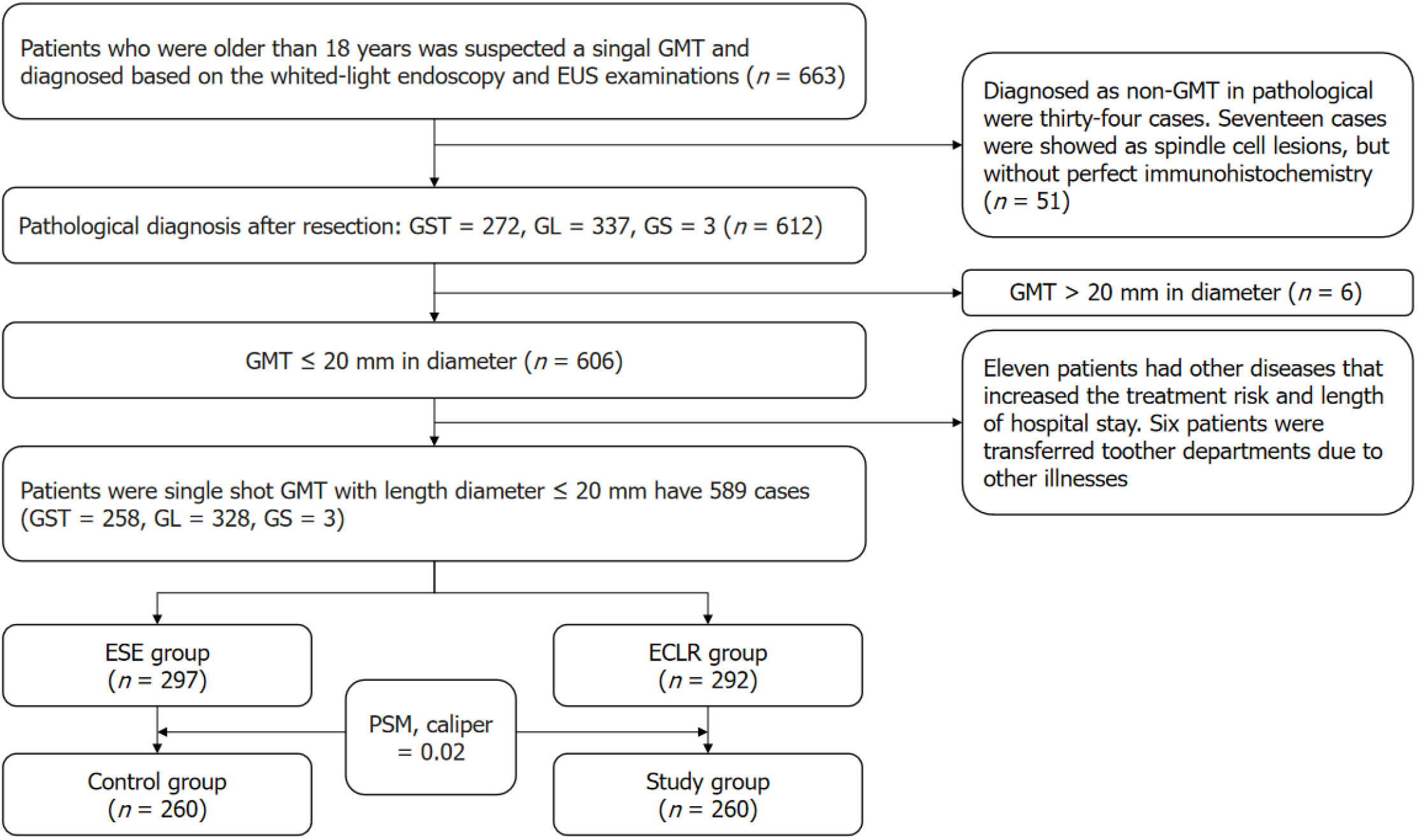Copyright
©The Author(s) 2024.
World J Gastrointest Endosc. Oct 16, 2024; 16(10): 545-556
Published online Oct 16, 2024. doi: 10.4253/wjge.v16.i10.545
Published online Oct 16, 2024. doi: 10.4253/wjge.v16.i10.545
Figure 1 Endoscopic submucosal excavation for treatment of small gastric mesenchymal tumors.
A: Small gastric mesenchymal tumor (sGMT) located at the gastric fundus near the cardia; B: Electrocautery markings visible on the sGMT’s surface; C: Submucosal injection around the sGMT; D: Incision of the mucosal surface using a mucosal incision knife (MIK) to expose the tumor; E: Separation of the tumor from its base using a MIK; F: The wound after complete tumor dissection; G: Closure of the wound using titanium clips; H: The completely resected tumor.
Figure 2 Endoscopic “calabash” ligation and resection for treatment of small gastric mesenchymal tumors.
A: Electrocoagulation imprints visible on the small gastric mesenchymal tumor (sGMT)’s surface; B: Submucosal injection around the sGMT; C: Incision of the mucosa on the surface of the sGMT using the tip of an electrosurgical snare; D: Protrusion of the tumor after negative pressure suction; E: First nylon loop ligating of the tumor base; F: Formation of the “calabash” shape after a second nylon loop, and resection of the tumor situated in the superior portion of the “calabash” utilizing the electrosurgical snare; G: Intact lower part of the “calabash” without perforation, with reinforcement ligation using a nylon loop; H: Completely resected tumor specimen.
Figure 3 Schematic diagram of endoscopic “calabash” ligation and resection for managing endophytic gastric stromal tumors.
Elec
Figure 4 Flowchart of study subject selection process.
GMT: Gastric mesenchymal tumors; EUS: Endoscopic ultrasonography; GST: Gastric stromal tumors; GL: Gastric leiomyomas; GS: Gastric schwannomas; ESE: Endoscopic submucosal excavation; PSM: Propensity score matching; ECLR: Endoscopic “calabash” ligation and resection.
- Citation: Lin XM, Peng YM, Zeng HT, Yang JX, Xu ZL. Endoscopic “calabash” ligation and resection for small gastric mesenchymal tumors. World J Gastrointest Endosc 2024; 16(10): 545-556
- URL: https://www.wjgnet.com/1948-5190/full/v16/i10/545.htm
- DOI: https://dx.doi.org/10.4253/wjge.v16.i10.545












